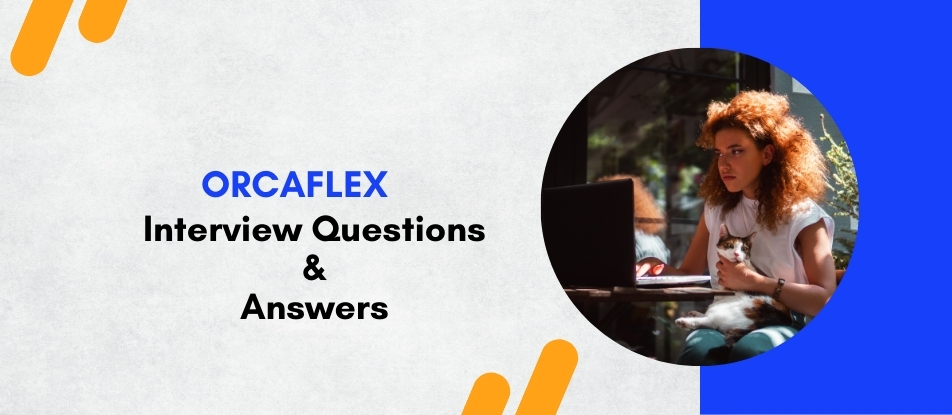
OrcaFlex Training provides advanced learning in marine dynamics simulation for offshore engineering. This course covers dynamic analysis of risers, moorings, cables, and subsea structures. Participants will master coupled systems, fatigue analysis, VIV simulation, and seabed interactions. Ideal for professionals in offshore design and analysis, this course ensures comprehensive expertise in OrcaFlex, enhancing skills in simulating complex marine environments and improving project efficiency.
Orcaflex Interview Questions Answers - For Intermediate
1. What is the significance of Oracaflex's time and attendance tracking feature?
Oracaflex's time and attendance tracking feature helps organizations accurately record and manage employee working hours, absences, and leaves. It ensures compliance with labor regulations, facilitates payroll processing, and provides insights into workforce productivity.
2. How does Oracaflex handle employee onboarding?
Oracaflex streamlines the employee onboarding process by providing tools for creating onboarding tasks, collecting new hire information, and tracking progress. It helps organizations welcome and integrate new employees efficiently.
3. Explain the benefits of Oracaflex's employee self-service portals for HR administrators.
Employee self-service portals in Oracaflex empower HR administrators by reducing the administrative burden associated with managing employee information and requests. It allows HR teams to focus on strategic tasks while providing employees with convenient access to HR services.
4. What role does Oracaflex play in improving employee engagement?
Oracaflex contributes to employee engagement by offering self-service tools, performance management features, learning and development opportunities, and communication channels. It helps foster a positive work environment and encourages employee participation and collaboration.
5. How does Oracaflex ensure data accuracy and integrity?
Oracaflex employs data validation checks, audit trails, and access controls to maintain data accuracy and integrity. It also offers tools for data cleansing and reconciliation to identify and resolve discrepancies.
6. What types of reports can be generated using Oracaflex's reporting and analytics tools?
Oracaflex's reporting and analytics tools enable organizations to generate various types of reports, including employee demographics, turnover rates, compensation analysis, performance evaluations, and compliance audits.
7. Explain the concept of compliance management in Oracaflex.
Compliance management in Oracaflex involves ensuring adherence to legal and regulatory requirements related to labor laws, tax regulations, and industry standards. It provides features such as automated compliance checks, policy enforcement, and reporting to mitigate risks.
8. How does Oracaflex support remote work and distributed teams?
Oracaflex offers remote access capabilities and mobile-friendly interfaces, allowing employees to access HR services and collaborate with colleagues from anywhere. It facilitates communication, coordination, and productivity in remote and distributed work environments.
9. What is the role of Oracaflex in performance appraisal processes?
Oracaflex facilitates performance appraisal processes by providing tools for setting performance goals, conducting evaluations, documenting feedback, and tracking progress. It helps managers and employees align expectations and identify areas for improvement.
10. Can Oracaflex accommodate the needs of different types of organizations, such as small businesses and enterprises?
Yes, Oracaflex offers scalable solutions that can accommodate the needs of organizations of various sizes, from small businesses to large enterprises. It provides flexible pricing and deployment options to suit different requirements.
11. Explain the importance of data security and privacy in Oracaflex.
Data security and privacy are paramount in Oracaflex to protect sensitive HR information from unauthorized access, breaches, and misuse. It adheres to industry best practices and regulatory standards to safeguard data confidentiality and integrity.
12. How does Oracaflex assist in workforce planning and forecasting?
Oracaflex provides tools for workforce planning and forecasting by analyzing historical data, identifying trends, and projecting future workforce needs. It helps organizations optimize staffing levels, anticipate skill gaps, and align workforce strategies with business goals.
13. What role does Oracaflex play in promoting diversity and inclusion in the workplace?
Oracaflex supports diversity and inclusion initiatives by providing tools for tracking diversity metrics, promoting equal opportunities, and fostering an inclusive culture. It helps organizations create diverse and equitable work environments.
14. How does Oracaflex handle employee performance data confidentiality?
Oracaflex ensures employee performance data confidentiality by restricting access to authorized users, implementing role-based permissions, and encrypting sensitive information. It maintains confidentiality while enabling performance management and feedback processes.
15. Explain the concept of employee lifecycle management in Oracaflex.
Employee lifecycle management in Oracaflex involves managing various stages of an employee's tenure, from recruitment and onboarding to performance management and offboarding. It provides a comprehensive approach to HR management.
Orcaflex Interview Questions Answers - For Advanced
1. What is the purpose of OrcaFlex in offshore engineering, and how does it contribute to project optimization?
OrcaFlex is a powerful marine dynamics simulation software used extensively in offshore engineering to model and analyze the behavior of flexible risers, mooring lines, umbilicals, and other subsea structures. It simulates how these components respond to environmental forces like waves, wind, and current. OrcaFlex plays a critical role in optimizing the design of offshore systems by ensuring that structures are safe, efficient, and within performance specifications under different environmental conditions. It allows engineers to test multiple configurations virtually, reducing the need for costly physical tests and ensuring that the chosen designs perform optimally in real-world scenarios.
2. Explain how OrcaFlex handles the simulation of coupled and uncoupled systems in dynamic analysis.
OrcaFlex offers both coupled and uncoupled dynamic analysis options. In a coupled analysis, multiple elements (e.g., a floating structure and mooring lines) are treated as interconnected, meaning that their movements affect one another in real-time. This is critical in simulating complex systems where the interaction between components is significant. In contrast, uncoupled analysis simplifies the model by analyzing elements independently. This approach can be useful for quick assessments but may lack the accuracy needed for highly integrated systems. Coupled analysis is essential when the influence of one system component on another can lead to non-linear or significant dynamic behavior, such as mooring lines affecting the motion of floating platforms.
3. How does OrcaFlex simulate fatigue analysis, and why is it important in offshore engineering?
OrcaFlex simulates fatigue analysis by calculating the cyclic stresses that offshore structures experience due to environmental loads over their operational lifetime. Fatigue analysis is crucial because offshore structures are subjected to repeated wave, wind, and current forces, which can lead to material degradation and eventual failure. OrcaFlex uses time-domain simulations to model these forces and the response of structures over time, then calculates the accumulated damage using methods like the Rainflow counting algorithm and Miner’s rule. This analysis helps in predicting the lifespan of offshore components and informing maintenance and replacement schedules.
4. What are the challenges associated with modeling non-linear seabed interaction in OrcaFlex, and how are they addressed?
Modeling non-linear seabed interaction is challenging because the behavior of flexible elements like pipelines and mooring lines on the seabed is highly complex. OrcaFlex addresses these challenges by using advanced soil models that account for non-linear soil resistance, which varies with penetration depth and movement. It also incorporates hysteresis effects, which account for energy loss during repeated movements. OrcaFlex allows for the customization of seabed stiffness and damping properties to simulate realistic conditions, making the analysis more accurate in predicting the interaction between subsea components and the seabed.
5. Can you explain the difference between quasi-static and dynamic simulation in OrcaFlex? When would you use each?
Quasi-static simulations in OrcaFlex assume that the system's response to environmental forces is immediate and ignores time-dependent effects such as inertia and damping. It is useful for simplified, conservative assessments of load capacity or initial design considerations where dynamic effects are not critical. Dynamic simulations, on the other hand, account for time-dependent behavior, such as the oscillations and delayed responses caused by inertia and damping forces. Dynamic simulation is essential when accurate modeling of time-varying responses, such as wave-induced oscillations, is required. It is particularly important in deep-water and floating structure designs where dynamic effects can dominate the system's behavior.
6. Describe how OrcaFlex can be used to simulate a vessel's motion and its impact on connected systems, such as mooring lines or risers.
OrcaFlex models vessel motions by integrating six degrees of freedom (surge, sway, heave, roll, pitch, and yaw) into its simulations. This capability allows the software to predict how a vessel responds to wave, wind, and current forces. The vessel's motion is then coupled with connected systems, such as mooring lines and risers, to simulate the interaction between these components. For example, the heave motion of a vessel may induce tension in a mooring line, which OrcaFlex will calculate dynamically. The software helps engineers ensure that vessel motions do not overstress these systems, avoiding failures in real-world conditions.
7. What is the significance of time-domain simulations in OrcaFlex, and how do they differ from frequency-domain simulations?
Time-domain simulations in OrcaFlex are essential for analyzing non-linear, time-varying behaviors of offshore structures under environmental loading. In time-domain simulations, OrcaFlex calculates the forces and responses of structures at each time step, providing a detailed picture of how systems behave over time. This is particularly important when dealing with transient phenomena or non-linear interactions, such as snap loads in mooring lines. Frequency-domain simulations, on the other hand, simplify the analysis by considering the system's response to a range of frequencies in a steady-state condition. While frequency-domain simulations are faster, they are less accurate for systems with significant non-linearities or when analyzing transient events.
8. How does OrcaFlex integrate with other software tools, such as finite element analysis (FEA) platforms, for complex offshore simulations?
OrcaFlex can integrate with other engineering software, such as finite element analysis (FEA) tools, to provide a comprehensive solution for complex offshore simulations. For instance, OrcaFlex can export loading conditions (e.g., tension and bending moments) that result from dynamic analysis to FEA software for detailed structural analysis. Conversely, structural data from FEA tools can be imported into OrcaFlex to refine the dynamic modeling of flexible structures. This integration allows for a more detailed and accurate assessment of both the hydrodynamic behavior of offshore systems and the structural integrity of their components.
9. What are the primary considerations when modeling wave loads in OrcaFlex?
When modeling wave loads in OrcaFlex, several key considerations must be taken into account: wave type (e.g., regular or irregular), wave theory (e.g., Airy, Stokes, or stream function), and the interaction between waves and structures. Regular waves are used for simplified or theoretical analysis, while irregular waves represent real sea states more accurately using wave spectra like the JONSWAP or Pierson-Moskowitz models. Additionally, OrcaFlex allows for the consideration of wave kinematics stretching and wave-current interactions, which are important for accurate simulations in varying environmental conditions. The choice of wave model depends on the depth of water, size of waves, and project requirements.
10. How do you model and simulate vortex-induced vibration (VIV) in risers using OrcaFlex?
Vortex-induced vibration (VIV) in risers is a complex phenomenon caused by alternating vortex shedding from the riser's surface in the presence of a current. OrcaFlex can simulate VIV by modeling the interaction between the riser and the fluid flow, including the vortex-shedding process. OrcaFlex includes VIV modules that use empirical data and analytical models to predict the onset and effects of VIV on risers. These simulations help determine the frequency and amplitude of vibrations, which are critical in assessing the fatigue life of the riser. VIV suppression devices, such as strakes or fairings, can also be modeled to evaluate their effectiveness in mitigating vibration.
11. What advanced mooring analysis techniques can OrcaFlex perform, and how do they help in deep-water applications?
OrcaFlex performs advanced mooring analysis techniques such as static, dynamic, and fatigue analysis for deep-water applications. It can model various mooring systems, including catenary, taut, and hybrid moorings. In deep-water applications, the dynamic behavior of mooring lines is critical due to the significant environmental forces acting on the floating structures. OrcaFlex’s ability to handle coupled dynamic analysis is particularly useful, allowing for the accurate simulation of the interaction between the mooring system and floating platforms. Additionally, OrcaFlex’s fatigue analysis tools help predict the long-term durability of mooring lines under cyclic loading conditions, ensuring their reliability in deep-water environments.
12. Explain the significance of OrcaFlex's ability to model large deformation theory in subsea pipelines.
OrcaFlex’s large deformation theory capability is essential for accurately modeling the non-linear behavior of subsea pipelines subjected to large strains and displacements. This is particularly important for applications such as pipeline installation, where bending, buckling, and laying processes involve significant deformations. Large deformation theory accounts for both geometric and material non-linearities, ensuring that the pipeline’s response to loads, such as those from installation equipment or environmental forces, is accurately represented. This feature helps prevent failures during installation and operation, making it crucial for the safety and reliability of subsea pipeline systems.
13. What role does OrcaFlex play in the simulation of floating offshore wind turbines (FOWTs), and how does it address unique challenges in this field?
OrcaFlex is increasingly used in the simulation of floating offshore wind turbines (FOWTs) due to its ability to model the complex interaction between the turbine, floating platform, mooring system, and environmental forces. FOWTs present unique challenges because they involve coupled dynamic behavior between the wind turbine's rotor, the floating platform, and the mooring lines. OrcaFlex addresses these challenges by providing advanced coupled simulations that account for the six degrees of freedom of the floating platform and the dynamic loads from wind, waves, and currents. This helps engineers optimize FOWT designs for stability, performance, and cost-effectiveness.
14. How does OrcaFlex simulate cable dynamics in subsea applications, and what are the challenges involved?
OrcaFlex simulates the dynamics of subsea cables, such as umbilicals or power cables, by modeling their interaction with environmental forces like currents, waves, and vessel motion. The software calculates the tension, bending moments, and fatigue that the cable experiences over time. One challenge in simulating cable dynamics is accurately capturing the cable’s flexibility and the non-linear interactions with the seabed and surrounding water. OrcaFlex addresses this through detailed cable properties such as stiffness, weight, and hydrodynamic drag. It also allows for the simulation of installation processes, ensuring that the cable’s behavior during deployment is accurately modeled.
15. What are the best practices for validating OrcaFlex simulation results with real-world data?
Validating OrcaFlex simulation results with real-world data involves several best practices. First, it is important to use accurate input data, including environmental conditions, material properties, and structural configurations, to ensure that the model reflects reality as closely as possible. Calibration of the model using field data from previous projects or physical tests is also essential. Engineers should compare OrcaFlex's predictions, such as tension and motion responses, with data from in-situ sensors or monitoring systems. Sensitivity analysis, where key parameters are varied to assess their impact on results, is another important step in validation. Finally, using recognized industry standards and guidelines for comparison ensures that the simulation meets the required performance criteria.
Course Schedule
| Oct, 2025 | Weekdays | Mon-Fri | Enquire Now |
| Weekend | Sat-Sun | Enquire Now | |
| Nov, 2025 | Weekdays | Mon-Fri | Enquire Now |
| Weekend | Sat-Sun | Enquire Now |
Related Courses
Related Articles
- Elevate Your Career with Google Cloud Architect Online Training
- Plan, create, and execute the projects like a master!
- Learn Revit Structure Anytime, Anywhere: Go Online!!
- Learn Big Data Online – choose the best course for your career
- Certify Your Expertise: PingDirectory Certification and Training Course for Proficient Identity Management
Related Interview
- Certified Information Systems Security Professional (CISSP) - Interview Question Answers
- Machine Learning Interview Questions Answers
- Salesforce App Builder (DEV 401) Training Interview Questions Answers
- Primavera P6 - Interview Question Answers
- AWS Solution Architect - Professional Level Training Interview Questions Answers
Related FAQ's
- Instructor-led Live Online Interactive Training
- Project Based Customized Learning
- Fast Track Training Program
- Self-paced learning
- In one-on-one training, you have the flexibility to choose the days, timings, and duration according to your preferences.
- We create a personalized training calendar based on your chosen schedule.
- Complete Live Online Interactive Training of the Course
- After Training Recorded Videos
- Session-wise Learning Material and notes for lifetime
- Practical & Assignments exercises
- Global Course Completion Certificate
- 24x7 after Training Support


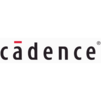


.png)




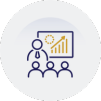
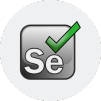
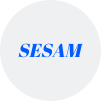


 Join our Live Instructor-Led online classes delivered by industry experts
Join our Live Instructor-Led online classes delivered by industry experts